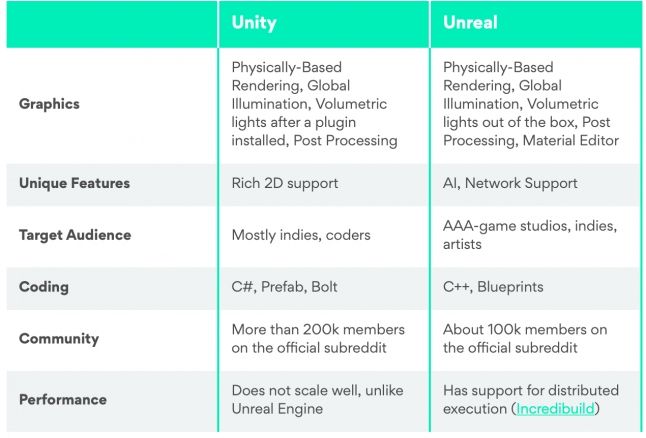What To Use to Build 3D/AR/VR Industrial Experiences
The Future is Now: Building Immersive 3D/AR/VR Industrial Experiences
Preparing for a 3D/AR/VR Project
Before jumping into the vast ocean of 3D/AR/VR development, it's critical to lay the groundwork.
Defining Your Objectives
Begin with the end in mind. What do you hope to achieve with your 3D/AR/VR experience? Are you looking to enhance training, improve design processes, or create an immersive marketing campaign? Clear objectives will shape the direction of your project.
Knowing Your Audience
Who will be experiencing your 3D/AR/VR creation? Understanding your audience's needs, expectations, and technology familiarity will inform the complexity and design of your project.
Setting Up Your Development Team
A successful project hinges on a skilled team. You'll need a mix of programmers, 3D artists, UX/UI designers, and project managers who can bring your vision to life.
Choosing the Right Tools for 3D/AR/VR Development
The market is teeming with tools and platforms that promise to make 3D/AR/VR development seamless. Here are some of the top contenders.
3D Modeling Software Options
Blender
An open-source powerhouse, Blender is beloved for its versatility in modeling, animation, and simulation features.
Maya
Preferred by professionals for its advanced features, Maya offers robust tools for creating detailed and complex 3D animations.
AR/VR Development Platforms
Unity
Unity's real-time development platform is widely used for creating multi-platform AR and VR experiences.
Unreal Engine
Known for its stunning visuals, Unreal Engine is a top choice for developers prioritizing high-fidelity graphics.

Essential Features of 3D/AR/VR Tools
To build engaging and effective industrial experiences, your chosen platform should support these essential features.
User Experience Design (UX)
The user's journey through the experience should be intuitive and memorable. Good UX design is paramount.
Realism and Interactivity
The more realistic and interactive the experience, the more engaging it will be. Look for tools that support high-detail environments and responsive controls.
Multi-User Collaboration
Especially in industrial settings, tools should enable multiple users to interact within the same environment, which is critical for training and simulations.
The Integration of AI with 3D/AR/VR
Artificial Intelligence (AI) can greatly enhance the capabilities of your 3D/AR/VR project.
Enhancing Realism with AI
AI can be used to simulate real-world physics, generate dynamic content, and create realistic interactions within a virtual environment.
AI for Improved User Interaction
Natural language processing and machine learning can allow users to interact with the experience in a way that feels natural and intuitive.
Best Practices for Developing 3D/AR/VR Experiences
Developing immersive experiences requires more than just technical skill—it requires a creative and user-centric approach.
Focus on Storytelling
A compelling narrative can make a 3D/AR/VR experience more engaging and memorable.
Prioritize Usability
If users struggle to navigate your experience, they will disengage. Usability testing is crucial.
Test and Iterate
Continuous testing and refinement based on user feedback will lead to a more polished end product.
Industry-Specific Applications
3D/AR/VR technologies have specific applications in various industries that can revolutionize how work is done.
Manufacturing and Design
These technologies enable rapid prototyping, design reviews, and factory floor simulations.
Training and Education
Immersive experiences can enhance learning and retention, especially in complex or dangerous tasks.
Marketing and Sales
AR/VR can be used to create interactive catalogs and engaging product demos that bring products to life for potential buyers.
Overcoming Challenges in 3D/AR/VR Development
Developing 3D/AR/VR experiences isn't without its challenges, but they can be overcome with the right approach.
Technical Hurdles
Investing in the right hardware and staying updated with the latest software developments is key.
User Adoption
Creating intuitive experiences and providing necessary training can ease the adoption curve for users.
Measuring the Success of Your 3D/AR/VR Project
The success of a 3D/AR/VR project can be measured using various metrics, but here are some key considerations.
Key Performance Indicators (KPIs)
Define KPIs such as user engagement, learning outcomes, and sales conversions to measure the effectiveness of your experience.
User Feedback and Iteration
Gather user feedback to continuously improve the experience, leading to better performance against your KPIs.
The Future Prospects of 3D/AR/VR in Industry
As technology evolves, so do the possibilities.
Trends to Watch
Stay abreast of emerging trends, such as the integration of VR with social media platforms or the use of AR for remote assistance.
Preparing for Continuous Innovation
Industries should prepare for ongoing change by fostering a culture of innovation and flexibility in their approach to 3D/AR/VR.
Conclusion
Building immersive 3D/AR/VR industrial experiences is a journey of combining technology with creativity. By choosing the right tools, focusing on user experience, and staying prepared for the evolving tech landscape, industries can leverage these powerful mediums to transform their operations, training, and customer engagement strategies.
FAQs
- What is the best software to start with for a beginner in 3D/AR/VR?
- How can AI enhance the realism of VR experiences?
- What are some effective ways to measure the ROI of an AR marketing campaign?
- Can you give examples of successful industrial VR training programs?
- What are the hardware requirements for developing AR/VR content?
TALK TO A PRO
We're here to bring your brand to life!
Stay Connected with BrandXR
Create Augmented Reality for Free!
Create, Publish, and Measure 3D Augmented Reality Experiences Without Having to Code.














